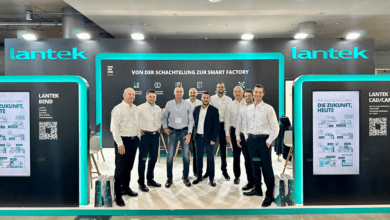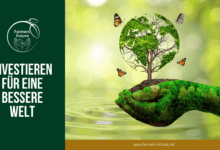The paulownia tree: a green giant in the fight against climate change

CO storage and rapid growth characterize the Paulownia tree. Originating in Asia, this tree stands out for its extraordinary growth rate and remarkable ability to absorb carbon dioxide, making it a sought-after player in climate change mitigation efforts. In the current era marked by sustainability and climate protection endeavors, the Paulownia tree, also known as Empress tree or Princess tree, is therefore the subject of agronomic and climatological studies.
From Root to Crown: How Bonsels Farm Revolutionizes Forestry
An exemplary case is provided by Bonsels Farm in Neukirchen-Vluyn, under the leadership of Hanna and Stefan Bonsels. Within a year, these trees reach a trunk circumference of about 10 cm and predict a height of 13 to 14 meters and a trunk circumference of 35 to 40 cm after twelve years. Compared to an oak, which absorbs about 30 kg of CO annually, a Paulownia tree can absorb up to 700 kg of CO. This efficiency in CO absorption combined with rapid growth presents the Paulownia tree as an effective option for carbon sequestration and also provides a sustainable wood resource.
Not only fast-growing but also fire-resistant: versatile benefits of Paulownia wood
Despite these advantages, the tree requires intensive care, including precise pruning of branches to ensure a high-quality, knot-free trunk essential for later wood processing. Paulownia wood is known for its lightness, stability, excellent insulation properties, and fire resistance, making it a valuable material in fire protection.
Paulownia in Germany: Between Ecological Benefits and Invasive Concerns
In the debate over the introduction and establishment of non-native tree species in Germany, the Paulownia tree, often known as the Kiribaum, is the focus of controversial discussions. Its rapid growth rate and versatile use of wood make it attractive for both forestry and industry. However, introducing a species poses potential risks to native ecosystems, especially through the displacement of indigenous species and the associated biodiversity loss. Critical voices therefore emphasize the need for careful consideration between economic benefits and ecological risks. While some Paulownia species raise concerns due to their invasive characteristics, those cultivated in Germany are characterized by controlled reproductive capacity, making uncontrolled spread unlikely. These specific hybrids could thus, despite general caution regarding non-native species, be justified for classification on the “white list” of the Federal Agency for Nature Conservation due to their adapted characteristics and limited ecosystem threat. Such a classification would signal that these specific hybrids pose no ecological danger and could pave the way for responsible use in German forestry.
Patience as the Key to Success: Financial Perspectives of Paulownia Cultivation
Investing in Paulownia trees represents a potential income source for farmers, albeit with the need to accept initial challenges and a longer waiting period until harvest. Traditionally, farmers are accustomed to annual revenues, but cultivating Paulownia trees requires patience and a long-term perspective. Bonsels Farm is not only experimenting with tree cultivation but also exploring the possibility of generating additional income through the sale of CO certificates, thereby contributing to environmental protection. The precise determination and optimization of the farm’s CO balance, in collaboration with science and industry, are still pending.
Green Innovations: the Paulownia Tree in Sustainable Agriculture
These initiatives reflect a broader trend in which farmers and businesses seek sustainable and environmentally responsible methods to address the challenges of climate change. The Paulownia tree, with its outstanding features, symbolizes these efforts and offers a promising perspective for a more environmentally friendly and sustainable future in agriculture.
Beyond Farmland: How Global Cooperation and Innovation Can Contribute to Food Security
In addition to agronomic relevance, global food security plays a central role. The necessity of international cooperation, promotion of innovations, and exchange of best practices are crucial to improving global food security. It is essential to make collective efforts to develop solutions that serve not only current but also future generations.
Author: Erik Simon, CEO Enhanced Finance Solutions CY Ltd.
Farmers Future is an innovative project that has set itself the task of combining sustainability and profitability in agriculture. Farmers Future offers people the unique opportunity to participate as partners in various sustainable agricultural projects and to profit from the sales proceeds. The aim is to make a positive contribution to the future of agriculture by promoting environmentally friendly farming methods and involving partners directly in the value creation process. At Farmers Future, transparency, sustainability and shared success are at the heart of our joint activities.
Kontakt
Farmers Future
Eric Simon
Nikos Nikolaidis 19
8010 Paphos
+35797786080
https://farmers-future.net/
Die Bildrechte liegen bei dem Verfasser der Mitteilung.
AchtungFür den Inhalt des Artikels ist der jeweilige Autor und nicht der Seitenbetreiber verantwortlich. |







